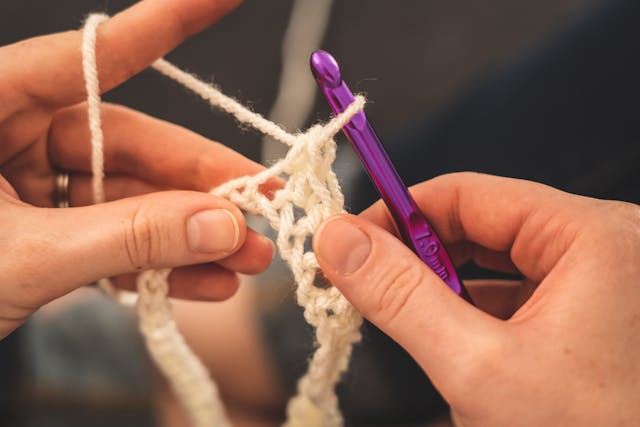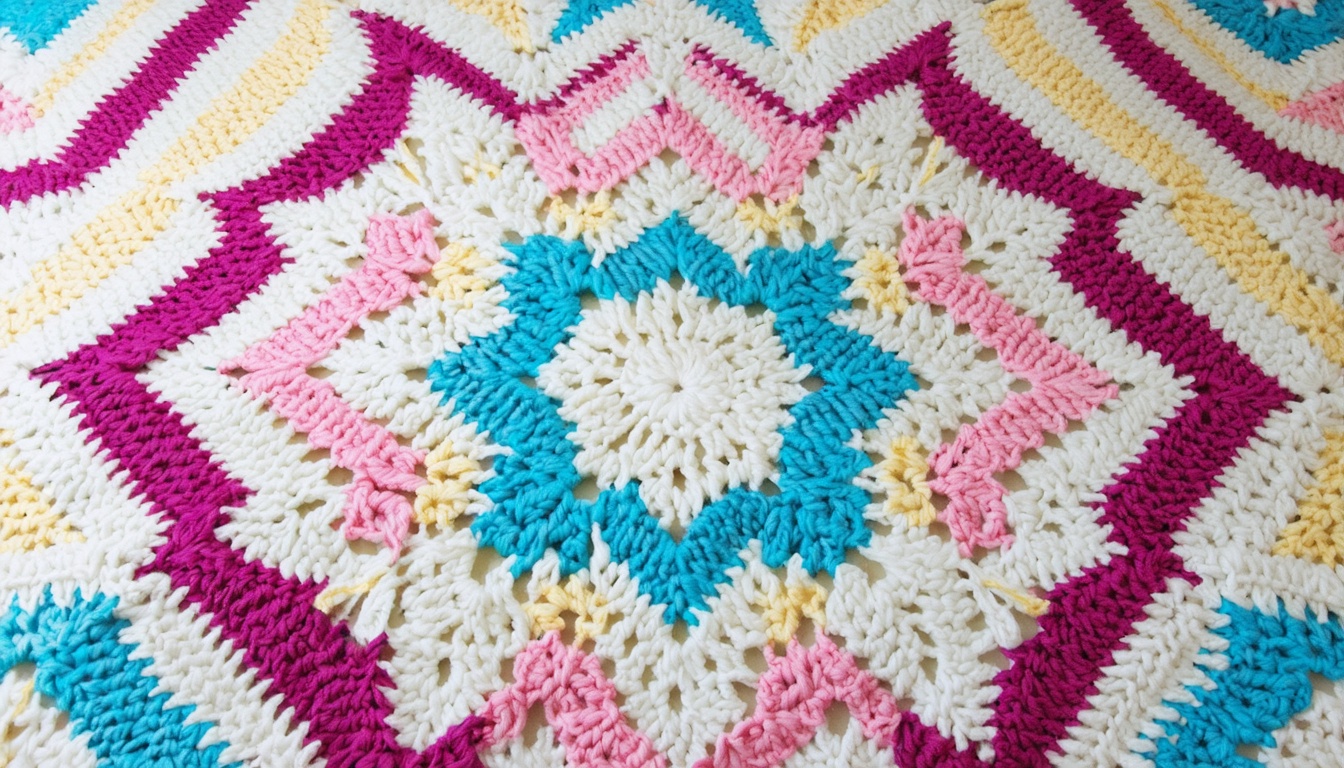5 Common Problems for new people learning to crochet and How to Overcome them
Common Problems for new people learning to crochet: Learning to crochet opens up a world of creative possibilities, yet many beginners face common challenges that can impact their journey. These hurdles range from physical discomfort with hooks and yarn to the complexities of pattern reading and tension control.
As a new crocheter, you might find yourself:
- Struggling with tight, uneven stitches
- Feeling frustrated when projects don’t match pattern pictures
- Getting confused by pattern terminology
- Experiencing hand strain or discomfort
- Losing motivation when progress feels slow
Understanding and addressing these challenges early in your crochet journey can make a significant difference in your learning experience. Many beginners give up too soon, thinking they lack natural talent when they encounter these normal learning curves.

The good news? Every experienced crocheter has faced these same issues. With proper guidance and practice, you can develop the skills needed to create beautiful projects. By identifying common problems and learning specific strategies to overcome them, you’ll build confidence and enjoy the process of mastering this rewarding craft.
Let’s explore these challenges and discover practical solutions to help you become a more confident crocheter.
1. Yarn and Hook Comfort
Many new crocheters struggle with tight stitches, which can make their projects look uneven and cause hand fatigue. The main reason for this issue is improper tension caused by an uncomfortable grip. It’s important to hold both the yarn and hook in a way that feels relaxed and comfortable for your hands.
Finding Your Perfect Grip
Here are some tips to help you find the grip that works best for you:
- Position your hook like a pencil, about 3-4 inches from the tip
- Let the yarn flow naturally between your fingers
- Keep your wrists straight to prevent strain
- Allow for smooth, fluid movements
Beginner-Friendly Yarn Types
When starting out, it’s helpful to choose yarn types that are easy to work with. Here are some recommendations:
- Medium-weight acrylic yarn (Size 4)
- Cotton yarn for better stitch definition
- Light-colored yarns to see stitches clearly
- Avoid fuzzy or textured yarns initially
Hook Selection Tips
Selecting the right hooks can also make a difference in your crocheting experience. Consider these tips when choosing hooks:
- Start with size H-8 (5mm) or I-9 (5.5mm) hooks
- Choose ergonomic hooks with soft grips
- Aluminum hooks slide smoothly through stitches
- Test different brands to find your preference
To develop muscle memory and improve your grip naturally, practice basic chain stitches regularly. Aim to create 20-30 chains each day, focusing on maintaining consistent loops rather than rushing through the process. This simple exercise will help build your confidence as you crochet.

Recommended Ergonomic Hooks
If you’re looking for specific ergonomic hooks to try out, here are some options:
- Clover Amour
- Furls Odyssey
- Tulip Etimo
- Susan Bates Bamboo Handle
With consistent practice, your hands will naturally find their optimal positioning while crocheting. However, it’s important to pay attention to any signs of discomfort such as cramping, tight grip, or uneven stitches. These may indicate that you need to adjust your technique or grip style.
2. Gauge Issues
Gauge is an important measurement in crochet that determines the size and fit of your finished project. It tells you how many stitches and rows you need within a specific area. You can think of gauge as the DNA of your project.
Understanding Gauge Measurements
When measuring gauge, there are three key aspects to consider:
- Width gauge: This measures the number of stitches per inch or centimeter.
- Length gauge: This measures the number of rows per inch or centimeter.
- Texture gauge: This refers to how the stitches look and feel.
Common Beginner Mistakes
As a beginner crocheter, it’s easy to make mistakes when it comes to gauge. Here are some common errors to watch out for:
- Skipping the gauge swatch
- Using a different yarn weight than specified in the pattern
- Not measuring gauge in the pattern stitch
- Ignoring blocked measurements
Creating an Effective Gauge Swatch
To ensure accurate gauge measurements, follow these steps when creating your swatch:
- Make a swatch larger than needed (6×6 inches recommended)
- Use the same yarn and hook size as your project
- Work in the pattern stitch specified
- Block your swatch before measuring
- Measure at multiple points for accuracy
Adjusting Your Gauge
Once you have measured your gauge, you may need to make adjustments to achieve the desired fit. Here are some common adjustments based on your measurements:
- Too Many Stitches? Go up a hook size
- Too Few Stitches? Go down a hook size
- Uneven Stitches? Practice maintaining consistent yarn tension
It’s important to remember that yarn weight also has a significant impact on gauge. For best results, stick to the recommended yarn weight in your pattern.
3. Reading Patterns
Pattern reading can feel like decoding a foreign language for new crocheters. The abbreviations, symbols, and technical terms create a unique challenge that many beginners face when starting their crochet journey.
Common Pattern Reading Challenges:
- Understanding abbreviations (sc, dc, ch)
- Interpreting stitch counts and repeats
- Following row-by-row instructions
- Visualizing the final product
A systematic approach helps break down complex patterns into manageable steps:
- Read through the entire pattern before starting
- Highlight or mark key instructions
- Create a personal abbreviation guide
- Take notes on row counts
- Use stitch markers to track progress
Starting with granny squares offers several advantages:
- Simple, repetitive patterns
- Quick completion time
- Immediate sense of achievement
- Practice with basic stitches
- Opportunity to experiment with colors
Learning Resources for Pattern Reading
Your pattern reading skills can improve with these trusted resources:
Books:
- “The Complete Book of Crochet Stitch Designs” by Linda P. Schapper
- “Crochet Stitch Dictionary” by Sarah Hazell
Online Platforms:
- Ravelry’s beginner pattern database
- YouTube tutorials by Bella Coco
- Craftsy’s pattern reading courses
Practice reading patterns with small projects like dishcloths or scarves. These projects build confidence while developing essential pattern interpretation skills.
4. Tension Control
Mastering tension control is a crucial skill in crochet, directly impacting your project’s professional appearance. Uneven tension creates irregular stitches, leading to wavy edges, puckered fabric, or holes in your work.
- Stitches too tight – creates stiff, rigid fabric
- Stitches too loose – results in gaps and uneven texture
- Inconsistent tension – produces varying stitch sizes
Your grip on both the hook and yarn plays a vital role in tension control. A death grip on your materials often leads to tight, compressed stitches, while a relaxed hold can create loose, sloppy work.
Practice Exercises for Better Tension:
- Chain stitch rows – Create multiple rows focusing on consistent yarn pull
- Single crochet swatches – Work 20-stitch squares maintaining steady pressure
- Two-handed method – Learn to hold working yarn in your non-dominant hand
- Rest your yarn over your index finger, under your middle finger
- Create a gentle resistance by wrapping yarn around your pinky
- Practice the “yarn hold” position without the hook first
- Take breaks to prevent hand fatigue affecting your tension
A helpful technique involves recording your tension patterns in a dedicated practice notebook. Note your grip style, mood, and time of day – these factors can influence your tension consistency. Regular tension checks during your project help maintain uniformity throughout your work.
5. Frustration with Progress
Learning to crochet can feel like climbing a mountain – each stitch represents a small step toward mastery. Many beginners experience moments of doubt when their projects don’t match their expectations or when progress seems painfully slow.
Common Frustration Triggers:
- Uneven stitches that don’t match pattern photos
- Projects taking longer than anticipated
- Difficulty maintaining consistent stitch sizes
- Having to restart projects multiple times
Setting realistic expectations plays a crucial role in your crochet journey. Remember that skilled crocheters spent countless hours perfecting their craft. Start with small, achievable projects and celebrate each successful stitch as a victory.
It’s important to recognize the workload dilemma that many beginners face, which often leads to frustration. However, there are practical ways to handle this frustration:
Practical Ways to Handle Frustration:
- Break complex projects into manageable sections
- Take regular breaks when feeling overwhelmed
- Document your progress with photos
- Keep your first attempts as benchmarks for improvement
The crochet community offers invaluable support for beginners. Local yarn shops often host stitch-and-chat sessions where you can learn from experienced crafters. Online platforms like Reddit’s r/crochet and Instagram’s crochet hashtags connect you with fellow beginners and seasoned experts who share tips and encouragement. Building community and connections through crochet can also be incredibly beneficial.
Support Resources:
- Local crochet groups and workshops
- YouTube tutorials for specific techniques
- Facebook crochet communities
- Ravelry forums and pattern discussions
Conclusion
Learning to crochet has its challenges, but every stitch you learn adds to your skills. Remember, every expert crocheter was once a beginner, just like you.
Your journey in crochet is unique – celebrate small wins like finishing your first chain or mastering a new stitch pattern. Be proud of how your tension improves and your confidence grows with each project.
Crochet is a craft that allows for endless creativity and self-expression. As you keep practicing, the difficulties you face now will become stepping stones in your journey to becoming a skilled crocheter. Be patient, keep crocheting, and watch your skills grow one stitch at a time.
FAQs (Frequently Asked Questions)
What are common problems faced by new crocheters?
New crocheters often encounter issues such as improper tension, difficulty reading patterns, and frustration with their progress. Addressing these challenges is crucial for a successful learning experience.
How can I improve my yarn and hook comfort?
To improve yarn and hook comfort, focus on finding a comfortable grip and practicing basic stitches like chains to enhance your comfort level. Additionally, selecting the right yarn type and hook size is essential, and ergonomic hooks can help reduce strain.
What is crochet gauge and why is it important?
Crochet gauge refers to the number of stitches per inch in your work. It is significant because it affects the sizing of your projects. Beginners often make mistakes regarding gauge; thus, creating gauge swatches before starting a project is recommended.
How can I better read crochet patterns?
Reading crochet patterns can be challenging for new crocheters. A step-by-step approach to interpreting simple patterns is helpful. Starting with beginner-friendly projects like granny squares can also ease the learning process. Resources such as books and online tutorials are available for further assistance.
What techniques can help me control my tension while crocheting?
Tension control impacts stitch size and overall project appearance. To adjust your tension, practice regularly and consider techniques designed to help you find your optimal tension. Common causes of tight or loose tension should be identified and addressed.
How do I cope with frustration when learning to crochet?
Feeling frustrated with slow progress is common among beginners. It’s important to set realistic expectations for yourself and seek support from crochet communities or groups. Embracing the learning process with patience can significantly help in overcoming these feelings.








